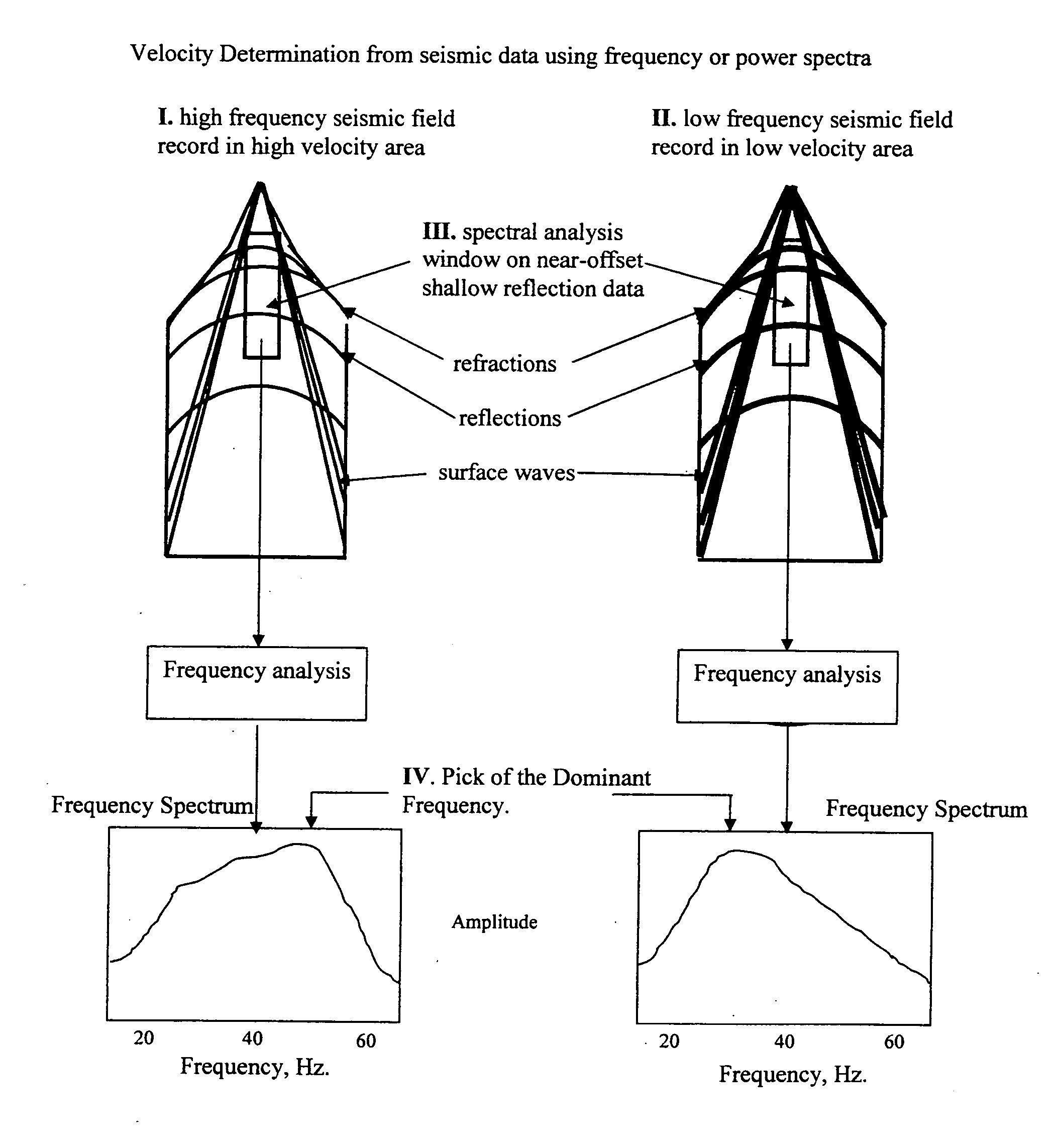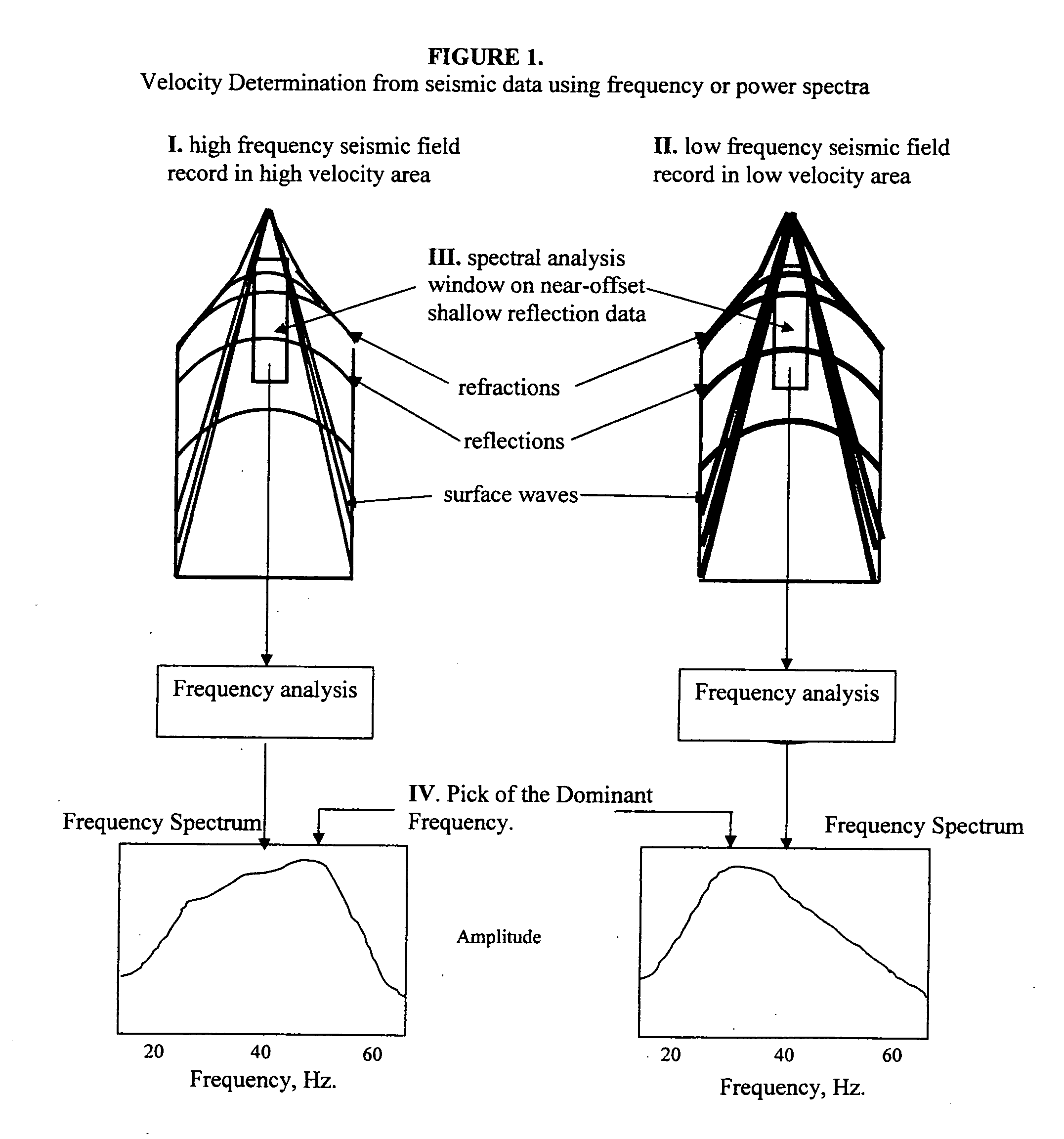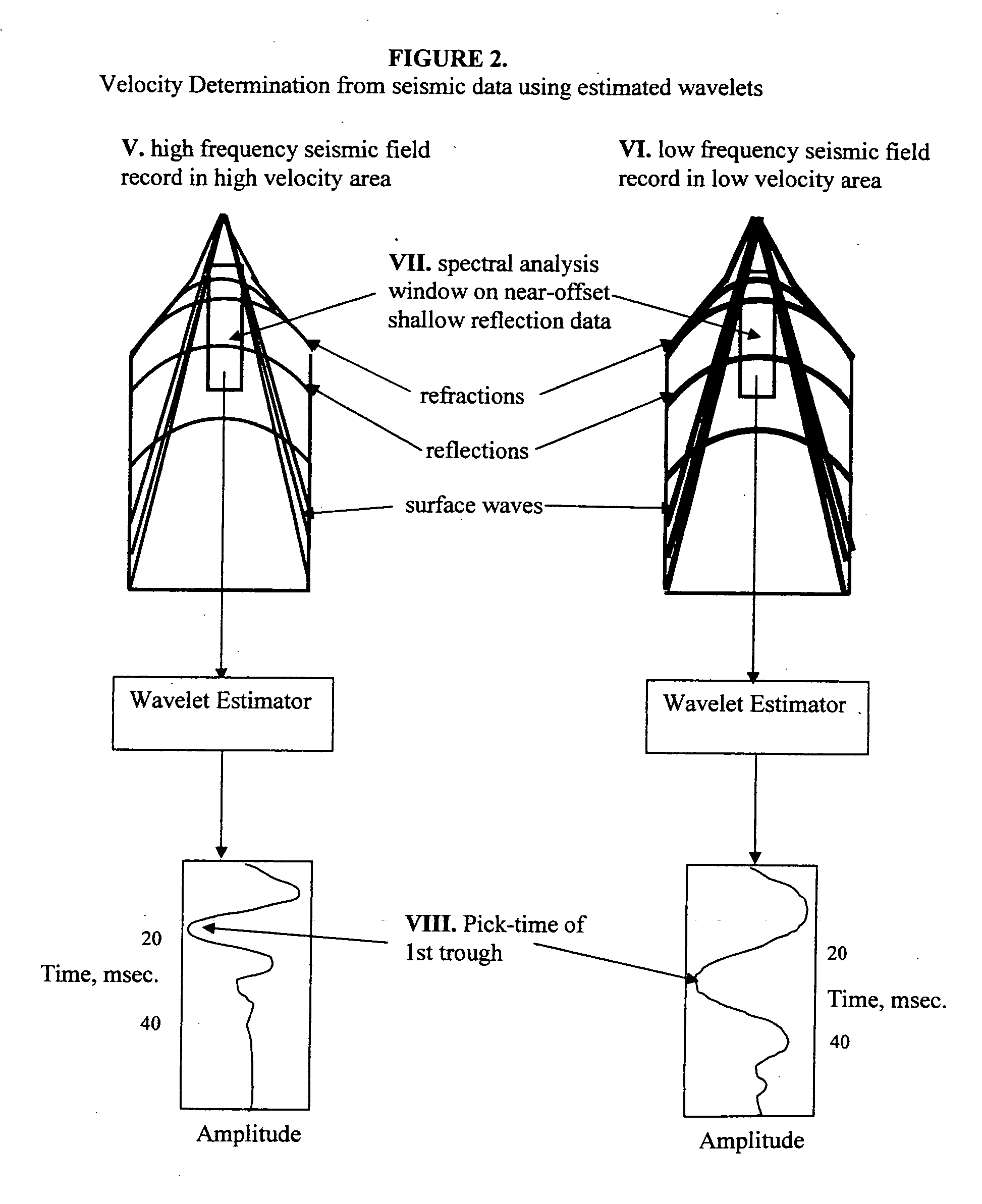Velocity determination of the near-surface layers in the earth using exploration 2D or 3D seismic data
a technology of seismic data and near-surface layers, which is applied in the direction of seismology, instruments, geological measurements, etc., can solve the problems of false time structure (static-correction errors), lack of velocity information, and distortion of reflection-time images
- Summary
- Abstract
- Description
- Claims
- Application Information
AI Technical Summary
Benefits of technology
Problems solved by technology
Method used
Image
Examples
Embodiment Construction
[0015] It is the intention of this invention to provide an estimate of the near-surface velocity variations and therefore a velocity field that can be used in any time-correction or depth-correction method to alleviate the problems outlined above.
[0016] Near-surface velocity estimation using frequency spectra [0017] estimate the frequency content of unprocessed field records for a given analysis window (FIG. 1, element III.) using either averaged frequency spectra or averaged power spectra [0018] make a relative measure or “pick” of the dominant frequency peak of the spectrum or of the power spectrum.(FIG. 1, element IV.) [0019] save and record this dataset of measured “picks” for each surface location [0020] determine an estimated minimum near-surface velocity value and a maximum near-surface velocity value from drilled uphole information or from best-guess estimates or other available information in the area. [0021] associate the minimum dominant frequency pick value with a minim...
PUM
 Login to View More
Login to View More Abstract
Description
Claims
Application Information
 Login to View More
Login to View More - R&D
- Intellectual Property
- Life Sciences
- Materials
- Tech Scout
- Unparalleled Data Quality
- Higher Quality Content
- 60% Fewer Hallucinations
Browse by: Latest US Patents, China's latest patents, Technical Efficacy Thesaurus, Application Domain, Technology Topic, Popular Technical Reports.
© 2025 PatSnap. All rights reserved.Legal|Privacy policy|Modern Slavery Act Transparency Statement|Sitemap|About US| Contact US: help@patsnap.com



